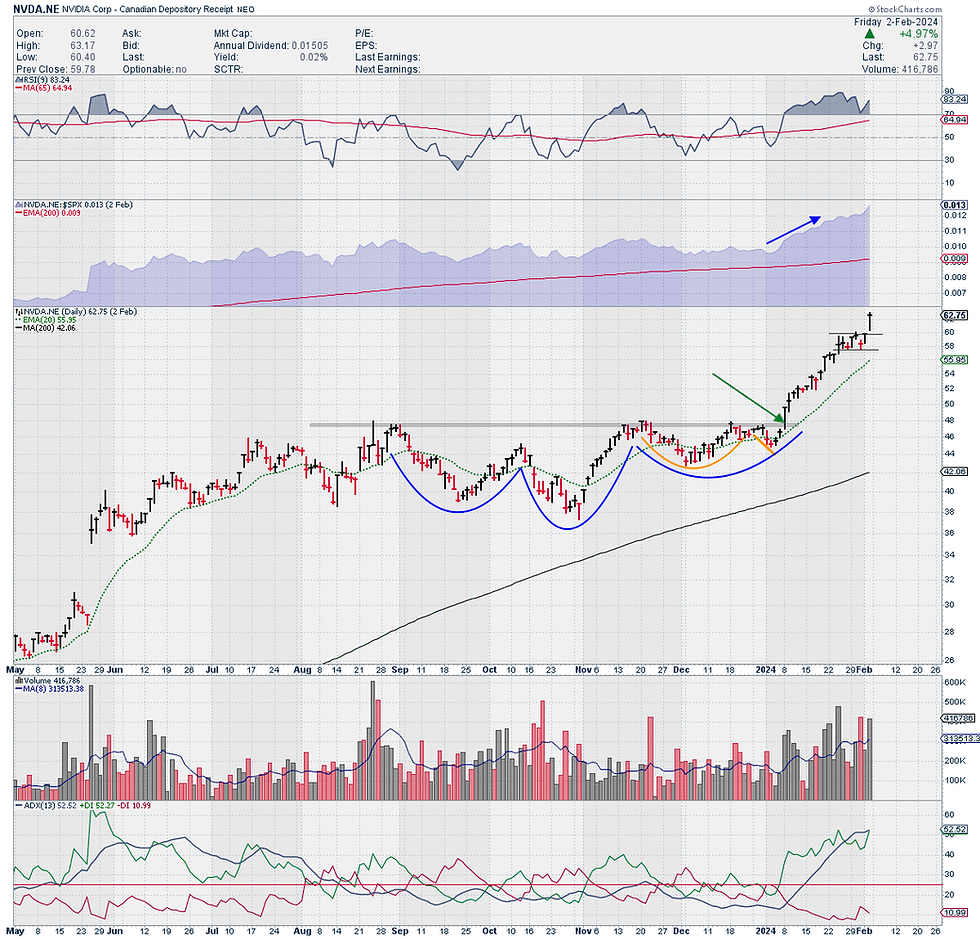Nasdaq 100 and Potential for a "Year End Rally"
- dhobden47
- Oct 17, 2023
- 2 min read
Our Chart of the Day is intended to be a standalone technical chart. We use them to highlight open positions, stocks on our watch list, or indicators that we believe are important, or just interesting at the time. It is not a directional market call. Feel free to share them with others who may be interested.
This is one of the most important charts today, as it has been the big tech names holding up the indices. Energy had been leading the markets for the last couple of months, but their percent as part of the S&P500 is tiny (much lower than historical averages), so less influential. In part, this contributes to the bullish case for energy shares.
Since 1971, there has almost always been a NASDAQ year-end rally and its average advance has been 14.7%; defined as the gain from NASDAQ’s September or October closing low through its high in November or December. NASDAQ’s best year-end rally was an amazing 54.5% in 1998. And even when we review NASDAQ’s performance from the same September or October low through the last day of the year, NASDAQ has been nearly as strong, advancing 94.2% of the time with an average gain of 11.1%. And none of the three losses occurred in a pre-election year like 2023!
The Accumulation Distribution Line (pane second from bottom) is a volume-based indicator developed by Marc Chaikin to measure the cumulative flow of money into and out of a security. It is one way I use to measure buying power.
Bullish and bearish divergences are where it starts getting interesting. A bullish divergence forms when price moves to new lows, but the Accumulation Distribution Line does not confirm these lows and moves higher. A rising Accumulation Distribution Line shows, well, accumulation. Think of this as basically stealth buying power. Based on the theory that volume precedes price, investors should be on alert for a bullish reversal on the price chart.
The Accumulation/Distribution line could arguably have shown a positive divergence as, in September it was only very slightly lower than in August while new Sept. lows in the QQQ were clear.
In the meantime, the Chaiken Oscillator (bottom pane) which measures the momentum of the Accumulation Distribution Line using the MACD formula is showing stealth strength, while the MACD of the QQQ (top pane) is turning positive.
Markets are about growth and earnings in the very long term, but human psychology is a much more important driver of market levels even over the course of a year or more. Against Mr. Market’s angst of the last few months, and our negative PTI, if the QQQ could break the downtrend in place since July, I think we could hear a whoosh as money rushes into the market, hoping for the famous year-end rally. Day by day.








Comments